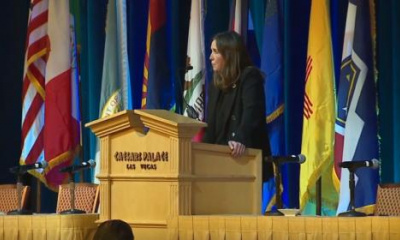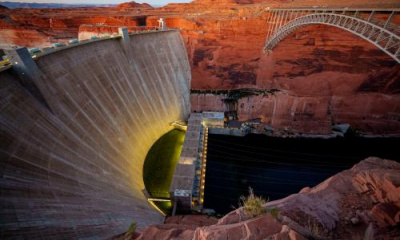Briefing details successful on the ground projects in Utah, Colorado
How much money will it take to save the Colorado River?
And is money the answer?
It turns out with money, as is with water, every drop in the bucket helps and can work to achieve water savings, restore ecosystems, provide additional recreational opportunities and prevent flooding.
These are on-ground solutions to fix a complicated watershed.
The Bureau of Reclamation has already invested $2.7 billion in basin resilience, and is getting ready to deliver even more federal drought and infrastructure dollars. Overall, there have been more than 300 projects announced for new funding since 2021 in the Colorado River Basin.
A Monday webinar hosted by the Water Hub featuring local elected officials, nonprofit organizations and others detailed some of the progress made so far with on-the-ground projects, particularly in the Upper Colorado River Basin and the look ahead.
While there have been a couple of good snowpack years in the basin overall, flows have remained challenged, and players at the table are changing the game plans to better adapt to a changing, dynamic watershed that provides water for 40 million users, irrigates more than five million acres of farmland and serves seven states in the West and 30 Native American tribes, as well as Mexico.
About 1.3 million people along the Wasatch Front also depend on the Colorado River via a complex transbasin diversion system called the Central Utah Project — so the health of the river is not just an “out there” problem affecting other regions of the country; it is a vital resource for Utah’s rapidly growing metropolitan areas.
Featured efforts in the webinar include a $3.5 million project to restore a stretch of the Price River called the Helper Restoration Project, which successfully removed an aging 12-foot dam that was a barrier for fish and wildlife passage. It also presented barriers to recreation such as angling and boating.
“We are a traditional coal mining, small rural community. And we’ve had to change gears with that single economic driver and really look at ourselves and identify assets that we have — those existing assets that we have — in order to fire up some economic diversification, which is what we were doing with all of the river restoration work, and we couldn’t be more excited,” said Lenise Peterman, Helper City mayor, during the panel discussion.
“It’s been just an amazing asset that we’ve really recovered in our city to drive some of those changes that we need to see,” Peterman added. “It breeds hope, it breeds engagement with the great outdoors.”
Jordan Nielson, Utah state director of Trout Unlimited, said the intent of this project was to restore ecosystem health and boost recreation by removing that aging infrastructure.
The organization worked 10 years on the project with Helper and a variety of other partners — and there is still work to be done on the Price River, which is a tributary of the Colorado River.
“There’s a decade’s worth of work that we could do right there and in Helper building resilience now. And the bigger picture in the Colorado River Basin,” Nielson said. “We’ve seen things get drier over this millennial drought, with the projections are that as it continues to get drier and hotter, and especially in a community that resides in the high plains desert of Utah — water is key to everything that we do.”
All told, there were six dam structures removed as part of the Helper Restoration Project.
The same kind of collaboration that played out between Helper City and the nonprofit Trout Unlimited was replicated at the Maybell Irrigation Ditch in Colorado, which draws from the lower Yampa River.
Since 1896, the Maybell Ditch has provided water and economic opportunity for agricultural producers in northwest Colorado. The Maybell Diversion project has received enormous investments to cover the $6.8 million project cost from a variety of state and federal funding sources; funding from federal grants included Bipartisan Infrastructure Law funds.
The headgate was only accessible by foot, took a mile walk to get there and had to be opened by two people, said Mike Camblin, president of the Maybell Irrigation District.
That district serves 18 ranchers or shareholders in Colorado.
“It was very hard for us to manage our water and get things dialed in. And we knew we had a problem,” Camblin said. “And one of our biggest problems was money to fix it. And so you know, we needed help and so we joined hands with The Nature Conservancy and a couple other groups to see if we can we could solve this problem.”
Completed earlier this year, the project entailed replacing the headgate with modern infrastructure that can now be accessed remotely.
Project results not only benefitted agriculture, but helped aquatic species with the installation of a fish ladder and opened up additional recreational activities on the river.
Because the district could better manage its water use, Camblin said it is running on about 10 cubic feet per second, less than it typically does.
“We’re saving water. We’re actually running less this spring than I think we ever have since I’ve been on the district and that’s been 21 years.”
The Colorado River Resilience documents the wide variety of funded projects and their success on a new map.
Correction: A previous version of this story incorrectly stated the amount of acreage irrigated in the Colorado River Basin. It should have said five million acres.









